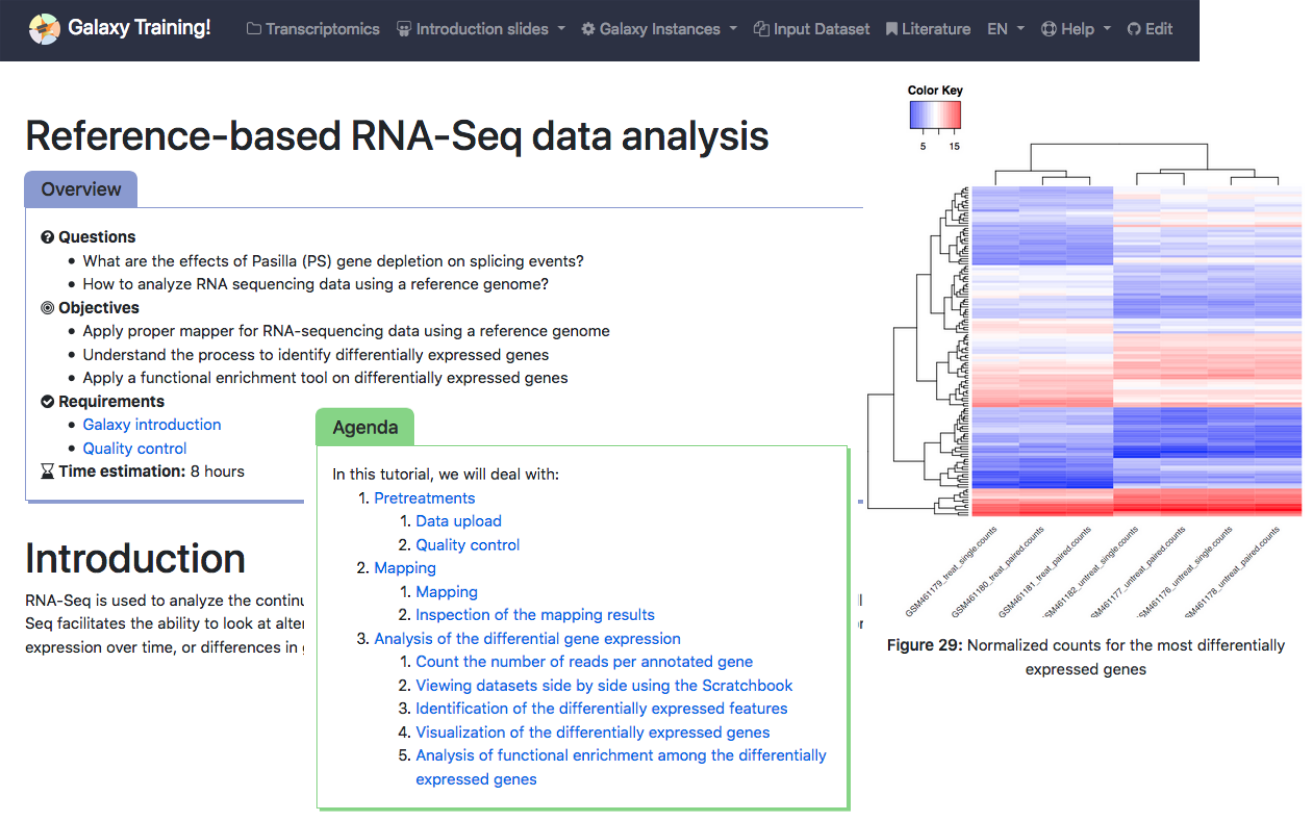Tutorial of the Month: "Reference-based RNA-Seq data analysis", selected by Saskia Hiltemann
The Galaxy community is developing and maintaining a collection of tutorials that are designed to be interactive and are built around Galaxy: https://training.galaxyproject.org. These tutorials can be used for learning and teaching how to use Galaxy for general data analysis, and for learning/teaching specific domains such as assembly and differential gene expression analysis with RNA-Seq data. These materials are targetting both self-paced individual learners and instructors.
To help highlight our tutorials and the training effort of the community, every month a member of the community will select one tutorial and explain in the Galactic Blog why they selected this tutorial.
Reference-based RNA Seq
This month, the Galaxy contributor of the Month!, Saskia Hiltemann, selects and presents the tutorial: "Reference-based RNA-Seq data analysis", from the topic "Transcriptomics":

The full version is available on the training website: http://training.galaxyproject.org/topics/transcriptomics/tutorials/ref-based/tutorial.html
Saskia, we are looking forward to learn more about your choice!
We learned about you and Galaxy in the Galaxy contributor of the Month! post. Can you do a small recap here?
I did a Master's degree in computer science with a specialisation in bioinformatics in Leiden (The Netherlands), and subsequently started working as a bioinformatician at the Erasmus Medical Center and am working on finishing up my PhD there. I started working with Galaxy about 6 years ago when I started working at the EMC, and have worked on a variety of projects, starting with prostate cancer analysis and most recently have done several metagenomics projects. I develop Galaxy tools and workflows for researchers and clinicians in our institute so that they can run complex analyses without needing the help of a bioinformatician.
Can you tell us a little about yourself and your relationship to training?
I have always enjoyed teaching, having worked as a tutor all throughout university. I strongly believe that the domain experts (scientists, clinicians) should be empowered to run their own analyses, without being reliant on a specialist bioinformatician. I think Galaxy is an ideal platform for delivering training, because it allows learners to really focus on the analysis concepts, instead of details of the implementation or unix commandline. When the Galaxy Training Materials project started I was very excited, and have loved contributing to this project and being a part of the awesome community behind it.
Why have you selected this particular tutorial as the tutorial of the month?
I really like this tutorial because it is a nice end-to-end analysis, starting really from the raw data coming off the sequencer, and doing some QC, mapping, analysis and visualisation.


I think it is also one of tutorials most often taught during workshops, so all the different instructors around the world who teach this keep the materials up-to-date together, resulting in very high-quality materials, really cutting down on the time needed to prepare before each time I teach this.
Thanks to Saskia for selecting this tutorial and answering our questions. We would like also to thank Bérénice Batut, Clemens Blank, Anika Erxleben, Mallory Freeberg, Maria Doyle, Mo Heydarian, Nicola Soranzo, Pavankumar Videm and Peter van Heusden who developed and contributed to this tutorial.
We recommend going through this nice tutorial, using it for self-learning or during workshops. Enjoy it!